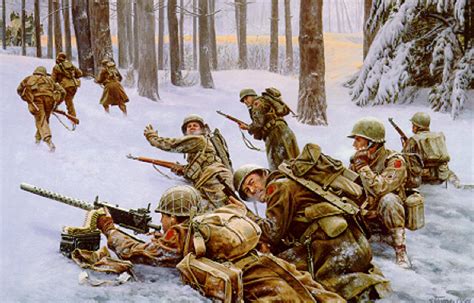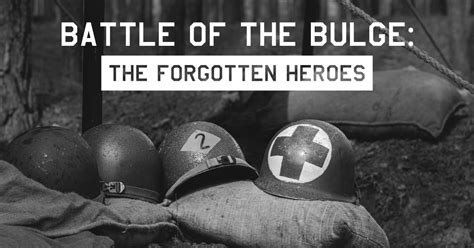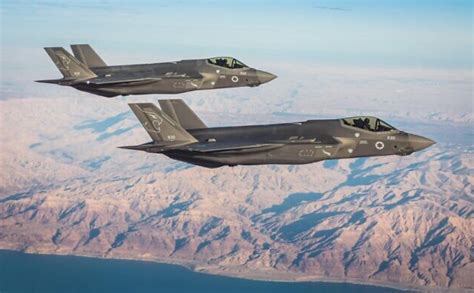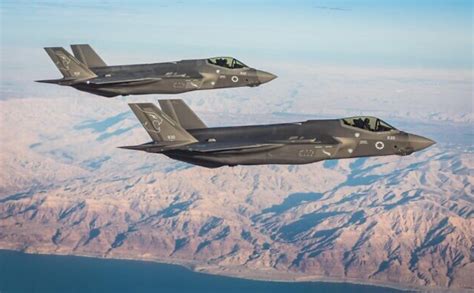
A U.S. Army division, largely composed of service and support troops with minimal infantry training, played a pivotal and largely unrecognized role in stalling the German advance during the Battle of the Bulge in December 1944. The 333rd Field Artillery Battalion and elements of the 106th Infantry Division, despite being significantly outnumbered and ill-prepared for frontline combat, mounted a desperate defense near St. Vith, Belgium, buying crucial time for Allied forces to regroup and ultimately thwart the German offensive.
Forgotten Valor: How a Support Division Helped Stave Off Disaster in the Battle of the Bulge
The Battle of the Bulge, Hitler’s last major offensive on the Western Front, is a well-documented and intensely studied chapter of World War II. However, the contribution of one particular Army division, primarily consisting of service and support personnel, remains largely overlooked: the improbable stand of the 333rd Field Artillery Battalion and the remnants of the ill-fated 106th Infantry Division. In the chaotic opening days of the offensive in December 1944, these men, thrust into the teeth of the German onslaught near St. Vith, Belgium, mounted a desperate and ultimately crucial defense that helped blunt the German advance and buy valuable time for Allied reinforcements to arrive.
The German offensive, codenamed “Wacht am Rhein” (Watch on the Rhine), aimed to break through Allied lines in the Ardennes Forest, seize Antwerp, and split the Allied forces, thereby forcing them to negotiate a peace treaty. The element of surprise was critical to the German plan, and they achieved it, catching the Allies largely off guard with a massive armored assault launched in thick fog and snow. The Ardennes region was considered a quiet sector, manned by relatively inexperienced troops and divisions recovering from previous battles. The 106th Infantry Division, fresh off the boat and with virtually no combat experience, was one such unit. They were tasked with holding a large section of the front line, a responsibility for which they were demonstrably unprepared.
Adding to the Allied woes, the 333rd Field Artillery Battalion, an all-Black unit, was also stationed in the area. While its soldiers were well-trained in artillery operations, they lacked the infantry experience needed to repel a direct assault. Racial segregation within the U.S. Army at the time meant Black soldiers were often relegated to support roles, regardless of their capabilities.
As the German offensive roared to life on December 16, 1944, the 106th Infantry Division was quickly overwhelmed. Two of its three regiments, the 422nd and 423rd, were encircled and forced to surrender, resulting in one of the largest single surrenders of U.S. troops during the war. The remaining elements of the division, along with the 333rd Field Artillery Battalion, found themselves in a desperate fight for survival near St. Vith, a vital road junction.
The situation was dire. The German forces, spearheaded by Panzer divisions, were pushing hard to seize St. Vith and open the way to Antwerp. The defending American troops were outnumbered, outgunned, and reeling from the initial shock of the attack. Yet, they refused to yield.
The 333rd Field Artillery Battalion, despite facing intense artillery bombardments and direct infantry attacks, maintained a steady barrage of fire on the advancing German troops. They used their 155mm howitzers to disrupt enemy formations, destroy vehicles, and inflict heavy casualties. According to the Yahoo News report, “The 333rd Field Artillery Battalion, an all-Black unit, distinguished itself despite facing intense discrimination and segregation within the U.S. Army.” This highlights the immense courage and professionalism of these soldiers, who fought valiantly despite the prejudice they faced.
The defense of St. Vith was not solely the responsibility of the 333rd. Other units, including elements of the 7th Armored Division, the 9th Armored Division, and the 28th Infantry Division, also played crucial roles. However, the stand of the 333rd and the remnants of the 106th was particularly remarkable, given their initial disadvantage. They fought with tenacity and resourcefulness, using every available weapon and tactic to slow the German advance.
The fighting around St. Vith was brutal and chaotic. The dense forests and snow-covered terrain made it difficult to coordinate defenses and distinguish friend from foe. The Germans pressed their attack relentlessly, throwing wave after wave of troops and tanks against the American lines. The Americans, in turn, fought with desperate courage, often engaging in hand-to-hand combat.
The defense of St. Vith lasted for several days. During that time, the American troops inflicted significant casualties on the German forces and disrupted their advance. While the Americans were eventually forced to withdraw from St. Vith, their stubborn resistance had bought valuable time for Allied reinforcements to arrive.
The delay caused by the fighting around St. Vith proved to be critical. It allowed General Dwight D. Eisenhower, the Supreme Allied Commander, to shift forces from other sectors of the front and reinforce the Ardennes. The arrival of the 82nd Airborne Division and the 101st Airborne Division, along with other units, helped to stabilize the situation and eventually turn the tide of the battle.
The Battle of the Bulge raged for several weeks, with fierce fighting continuing until January 1945. The Allies eventually pushed the Germans back, but at a high cost. The battle was one of the bloodiest of World War II, with over 80,000 American casualties.
In the aftermath of the Battle of the Bulge, the performance of the 106th Infantry Division came under intense scrutiny. The division’s heavy losses and the surrender of two of its regiments led to criticism and accusations of incompetence. However, the role of the 333rd Field Artillery Battalion and the other units that fought bravely near St. Vith was often overlooked.
The story of the 333rd Field Artillery Battalion is a testament to the courage and resilience of American soldiers, particularly Black soldiers who fought for their country despite facing discrimination at home. Their contribution to the Allied victory in the Battle of the Bulge deserves to be recognized and remembered. According to the Yahoo News report, their story “is a reminder that heroism can be found in unexpected places and that even in the darkest of times, individuals can rise to the occasion and make a difference.”
The importance of the stand at St. Vith cannot be overstated. By holding up the German advance, the defenders bought precious time for the Allies to regroup and reinforce their lines. This delay ultimately prevented the Germans from achieving their objectives and played a significant role in the Allied victory in the Battle of the Bulge. The sacrifices made by the soldiers of the 333rd Field Artillery Battalion and the other units that fought near St. Vith helped to ensure that Hitler’s last major offensive ended in failure. Their story serves as a powerful reminder of the importance of courage, resilience, and determination in the face of adversity.
The story of the 333rd Field Artillery Battalion also highlights the complexities of race and military service in World War II. Black soldiers were often denied opportunities for combat roles and subjected to discrimination and segregation within the U.S. Army. Yet, they served with distinction and valor, proving their loyalty and commitment to their country. Their contributions to the war effort deserve to be acknowledged and celebrated.
In recent years, there has been a growing effort to recognize the contributions of the 333rd Field Artillery Battalion and the other overlooked units that fought in the Battle of the Bulge. Historians, veterans, and community groups have worked to raise awareness of their story and ensure that their sacrifices are not forgotten. This effort is essential to ensuring that the full story of the Battle of the Bulge is told and that all those who served are given the recognition they deserve.
The Battle of the Bulge remains a pivotal event in World War II history. It was a desperate gamble by Hitler to reverse the course of the war, but it ultimately ended in failure. The Allied victory in the Battle of the Bulge helped to pave the way for the final defeat of Nazi Germany. The story of the 333rd Field Artillery Battalion and the other unsung heroes of the battle serves as a powerful reminder of the courage, resilience, and determination of the American soldiers who fought to defend freedom and democracy. Their legacy should inspire generations to come.
The Battle of the Bulge was a near-run thing, and the desperate stand at St. Vith, spearheaded by the often-overlooked 333rd Field Artillery Battalion, played a crucial role in preventing a catastrophic German breakthrough. It is a story of courage under fire, resilience in the face of overwhelming odds, and a testament to the human spirit. It is a story that deserves to be told and remembered. The men of the 333rd Field Artillery Battalion, despite the discrimination they faced, fought with unwavering determination and helped to turn the tide of the battle. Their contribution to the Allied victory should never be forgotten.
Frequently Asked Questions (FAQs)
1. What was the Battle of the Bulge?
The Battle of the Bulge was a major German offensive campaign launched through the densely forested Ardennes region of Wallonia in Belgium, France, and Luxembourg on the Western Front toward the end of World War II. It began on December 16, 1944, and lasted until January 25, 1945. The offensive was Hitler’s last major attempt to split the Allied forces and force a negotiated peace. The Germans aimed to recapture Antwerp and cut off Allied supply lines. The battle resulted in heavy casualties on both sides but ultimately ended in a German defeat.
2. Why was the 333rd Field Artillery Battalion’s contribution overlooked?
Several factors contributed to the overlooking of the 333rd Field Artillery Battalion’s role. Firstly, the initial focus after the battle was on the significant losses suffered by the 106th Infantry Division, overshadowing the heroic efforts of other units involved in the defense. Secondly, racial prejudice within the U.S. Army at the time often led to the contributions of Black soldiers being downplayed or ignored. The 333rd, being an all-Black unit, faced discrimination that likely contributed to their story being marginalized. Finally, the chaotic nature of the battle and the subsequent focus on overall strategic outcomes may have resulted in the specific actions of individual units, especially support units, being less emphasized in historical accounts.
3. What made the defense of St. Vith so important?
St. Vith was a strategically vital road junction in the Ardennes region. Control of St. Vith would have allowed the German forces to maintain their momentum and advance more quickly towards their ultimate objective of Antwerp. The tenacious defense of St. Vith by the 333rd Field Artillery Battalion and other American units significantly slowed the German advance, disrupting their timetable and allowing the Allies to bring in reinforcements. This delay was crucial in preventing a German breakthrough and ultimately contributed to the failure of the offensive.
4. What challenges did the 333rd Field Artillery Battalion face during the Battle of the Bulge?
The 333rd Field Artillery Battalion faced numerous challenges, including:
- Lack of Infantry Training: As a field artillery unit, their primary focus was on providing fire support. They were not adequately trained or equipped for close-quarters infantry combat.
- Overwhelming Odds: They were significantly outnumbered by the attacking German forces, who possessed superior firepower and armor.
- Intense Enemy Fire: They were subjected to relentless artillery bombardments and direct infantry assaults.
- Racial Discrimination: They faced prejudice and segregation within the U.S. Army, which may have affected their morale and access to resources.
- Inexperience of Supporting Units: The 106th Infantry Division was largely inexperienced which meant the 333rd had to compensate for deficiencies in the rest of the defensive network.
Despite these challenges, they fought with remarkable courage and determination.
5. How is the contribution of the 333rd Field Artillery Battalion being recognized today?
In recent years, there has been a growing effort to recognize the contributions of the 333rd Field Artillery Battalion. Historians have begun to research and document their role in the Battle of the Bulge, and their story is being shared through books, articles, and documentaries. Veterans’ groups and community organizations are also working to raise awareness of their service and ensure that their sacrifices are not forgotten. Some descendants of the soldiers of the 333rd have been actively involved in preserving and promoting their history. The increased attention is helping to correct the historical record and give the 333rd the recognition they deserve. Furthermore, there are ongoing efforts to advocate for official recognition and awards for the unit’s bravery and service.
Expanded Context and Additional Details:
The story of the 333rd Field Artillery Battalion and the defense of St. Vith is inextricably linked to the larger context of the Battle of the Bulge and the prevailing social climate of the United States during World War II. To fully appreciate their contribution, it’s essential to understand the strategic objectives of the German offensive, the composition and preparedness of the Allied forces in the Ardennes, and the racial dynamics within the U.S. military at the time.
Hitler’s plan for the Battle of the Bulge was audacious. Facing dwindling resources and increasing pressure from both the Eastern and Western Fronts, he sought to achieve a decisive victory in the West that would shatter the Allied coalition and buy Germany time to consolidate its forces. The choice of the Ardennes as the point of attack was based on the terrain’s suitability for armored warfare, the relative weakness of the Allied defenses in the sector, and the element of surprise that could be achieved during the winter months when fog and snow would limit Allied air support.
The Allied forces in the Ardennes were indeed thinly stretched. The region was considered a quiet sector, and the troops stationed there were a mix of inexperienced units and divisions recovering from previous campaigns. The 106th Infantry Division, for example, was a newly arrived division that had not yet seen combat. The assumption was that the sector required minimal resources because a major offensive was unlikely in the difficult terrain during the winter months. This miscalculation proved to be a costly one.
The racial segregation within the U.S. Army during World War II had a profound impact on the experiences of Black soldiers. They were often assigned to non-combat roles, denied opportunities for advancement, and subjected to discriminatory treatment both on and off the battlefield. The 333rd Field Artillery Battalion, despite being a highly trained and capable unit, was not immune to these injustices. Their story serves as a stark reminder of the challenges faced by Black soldiers who fought for a country that did not always treat them as equals.
The defense of St. Vith was a desperate and improvised affair. As the German offensive unfolded, American units from various divisions converged on the town in an attempt to establish a defensive perimeter. The fighting was intense and chaotic, with units often isolated and forced to fight independently. The 333rd Field Artillery Battalion played a crucial role in providing fire support to the defending troops, disrupting German attacks and inflicting heavy casualties.
The actions of individual soldiers and small units during the defense of St. Vith exemplify the courage and resilience of the American troops. Stories of heroism abound, from artillery crews firing their guns until they were overrun by the enemy to infantrymen holding their ground in the face of overwhelming odds. These acts of bravery helped to slow the German advance and buy time for the arrival of reinforcements.
The delay caused by the fighting around St. Vith had a significant impact on the overall course of the Battle of the Bulge. It allowed General Eisenhower to redeploy forces from other sectors of the front, including the 82nd Airborne Division and the 101st Airborne Division, to reinforce the Ardennes. These units played a crucial role in stabilizing the situation and preventing the Germans from achieving their objectives. The 101st Airborne’s defense of Bastogne, in particular, became a symbol of American defiance in the face of adversity.
The Battle of the Bulge was a costly victory for the Allies. The fighting was intense and prolonged, and both sides suffered heavy casualties. The battle also had a significant impact on the civilian population of the Ardennes, who endured widespread destruction and displacement. However, the Allied victory in the Battle of the Bulge marked a turning point in the war. It shattered Hitler’s last major offensive and paved the way for the final defeat of Nazi Germany.
The legacy of the Battle of the Bulge continues to resonate today. It is remembered as a testament to the courage and resilience of the American soldiers who fought to defend freedom and democracy. The story of the 333rd Field Artillery Battalion and the other unsung heroes of the battle serves as a reminder that even in the darkest of times, individuals can rise to the occasion and make a difference. Their contributions should never be forgotten. The fight faced by the 333rd, both abroad and at home, is a unique perspective on the Second World War. The racial prejudice they faced when returning home, despite their bravery abroad, is a reminder of the deep seated social challenges of the time.
The rediscovery and recognition of the 333rd Field Artillery Battalion’s role is part of a broader effort to acknowledge the contributions of marginalized groups to historical events. It is important to ensure that the stories of all those who served are told and that their sacrifices are properly honored. This includes not only recognizing their military achievements but also understanding the social and political context in which they served. The increased awareness of the 333rd Field Artillery Battalion’s efforts have prompted further investigation into other overlooked units comprised of minority soldiers, enriching the historical narrative and offering a more complete picture of the war.
The Battle of the Bulge also highlights the importance of strategic planning and intelligence gathering. The Allied miscalculation regarding the likelihood of a German offensive in the Ardennes demonstrated the need for vigilance and accurate assessment of enemy capabilities. The battle led to a reassessment of Allied intelligence procedures and a greater emphasis on anticipating potential threats. The near disaster of the battle exposed critical vulnerabilities in the Allied war machine, leading to significant improvements in strategy and resource allocation in the final months of the war.
In conclusion, the story of the 333rd Field Artillery Battalion and their role in the defense of St. Vith during the Battle of the Bulge is a compelling example of courage, resilience, and the importance of recognizing the contributions of all who serve. Their actions helped to slow the German advance, buy valuable time for the Allies, and ultimately contribute to the failure of Hitler’s last major offensive. Their story deserves to be told and remembered, not only as a testament to their military achievements but also as a reminder of the challenges faced by Black soldiers in a segregated army and the importance of striving for equality and justice for all. The legacy of the 333rd serves as an inspiration for future generations, reminding us of the power of courage and determination in the face of adversity and the importance of remembering and honoring the sacrifices of those who have served our country. The ongoing efforts to recognize their contributions represent a positive step toward a more complete and accurate understanding of World War II and the diverse individuals who fought to defend freedom and democracy. The story acts as a beacon to continually strive for true equality and recognition for all who serve.









